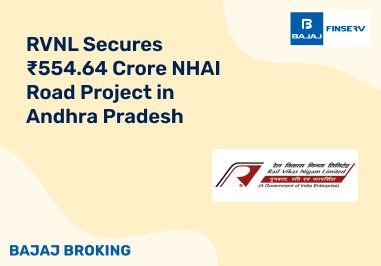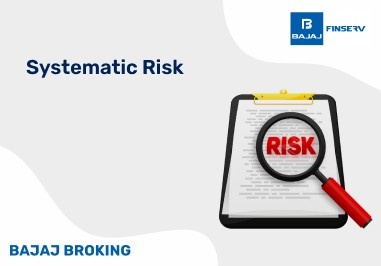When it comes to planning for the future, financial stability is among the top priorities. A long-term investment plan has become the need of the hour to create a safety net for post-retirement or to build a financially safe future. While there are numerous investment options available in India today, there are some options that enjoy more popularity than others. NPS and ELSS are two popular schemes chosen by many. While both enjoy a good reputation, the discussion of NPS vs ELSS may have left you wondering which of the two should you choose. Worry not, it’s not that complicated. Read on as we discuss the National Pension Scheme and the Equity-linked savings scheme individually and collectively. Understanding the difference between NPS and ELSS will help you in making the right financial decisions. Read on.
Introduction to NPS and ELSS
Both NPS and ELSS are ideal long-term investment plans that come with a long list of benefits. Both of them come with a lock-in period that leads to systematic and disciplined savings. Along with the advantage of tax saving, these financial products offer you the benefit of earning market-linked returns. Despite these similarities, there are many difference between NPS and ELSS. Here’s hoping that this article will help you in making your decision, of which of of the two you need to choose. As both these products serve different needs, you can also choose both of them to build a robust financial portfolio.
National Pension System is a reliable retirement investment and Equity Linked Savings Scheme allows an investment in equity with a minimum 3-year lock-in period. NPS and ELSS offer distinct features and tax benefits to match an individual’s requirements. Read on as we learn about both investments to help you make an informed choice.
What is NPS?
NPS or National Pension System is a long-term investment option that allows you to systematically invest a fixed amount of money to build a reliable retirement corpus. The scheme was introduced by the Government of India in 2004. In the initial years, NPS was an option only for government employees but with a positive response, the scheme was made available for everyone in 2009, except for people in the armed forces. Continue reading to get answers to all your queries on what is national pension scheme.
The scheme is built to encourage employees to invest a fixed amount in their pension fund to leverage the benefits once they retire in the form of monthly payments.
Investments in NPS function on a simple process: You invest a fixed amount of money in a pension fund manager that diversifies the money in a judicious mix of market-linked investment instruments and fixed income. An annual amount of ₹1,000 is mandatory to start an NPS Tier 1 account and only a partial withdrawal of 25% is allowed for emergency requirements.
Through NPS you can choose your assets in the form of equity, corporate bonds and government bonds. So while NPS builds a safety net for your post-retirement plan it also is a credible choice to diversify your investment portfolio. Additionally, under section 80C of the Income Tax Act, NPS is eligible for tax benefits up to ₹1.5 lakhs making it a wise choice for long-term investment plans.
What is ELSS?
Now that we have discussed what is national pension scheme let us dig into what is elss funds. Equity Linked Savings Scheme is an opportunity to invest in the equity market. ELSS acts like a mutual fund by taking the investment and diversifying it into various equity channels. Take a look at the key features of ELSS to get a better understanding:
Interestingly, ELSS is the only form of mutual fund that offers tax benefits under section 80C of the Income Tax Act.
The Equity Linked Savings Scheme encourages investors to make long-term equity investments more securely. There is a three-year lock-in period during which the investor cannot make a withdrawal.
The scheme has received a positive response for its key advantage of offering high returns.
An investment in ELSS has two-fold advantages: a wider profit margin and tax benefits.
ELSS can be used to generate fixed income, as well.
Key Differences Between NPS and ELSS
Now that you have an understanding of both the schemes, here’s a list featuring all the key difference between NPS and ELSS:
NPS is a pension-oriented investment scheme while ELSS is an equity-oriented investment plan.
The main objective of NPS is to provide a stable source of income post-retirement with returns through investments in funds, bonds and government securities while ELSS is designed to offer high returns and a chance to diversify the investment portfolio.
NPS is a steady and stable investment scheme while ELSS being an equity-oriented scheme is prone to certain risks.
The lock-in period for NPS is till the individual turns 60 years old and for Equity Linked Savings Scheme it is 3 years.
NPS and ELSS can provide tax benefits up to ₹1,50,000. Under NPS pension withdrawal and annuity are taxable. Withdrawals of up to ₹1 lakh after the lock-in period in an ELSS are tax-free. Keep in mind that returns over ₹1 lakh fall in the category of long-term capital gains tax (LTCG) of 10%.
Advantages and Disadvantages of NPS
A systematic investment opportunity to generate wealth for your retirement and long-term investment plans through NPS is a wise choice. However, to make the most of your investment it is important to evaluate the advantages and disadvantages of this scheme.
Advantages
NPS offers three-fold returns- In the form of monthly returns/pension after retirement, equity profit margins, and a chance to change the fund manager in case of dissatisfaction with the fund management.
The Pension Fund Regulatory and Development Authority regulates NPS, which adds credibility and transparency. Regular reviews, updates, and audits are conducted to maintain credibility.
This scheme is designed with a flexible approach that allows investors to invest any time during a financial year and change subscriptions to meet their requirements.
Disadvantages
A subscriber to NPS is not allowed to withdraw until the scheme reaches the age of 60 years. A partial withdrawal is allowed after 10 years of investing in NPS but only three such withdrawals are allowed before maturity.
A portion of the money invested in NPS is driven towards equity but this is limited. The equity investment limits are restricted to 75% which can steal the opportunity to leverage equity markets for subscribers in their 20s-30s.
The primary pension savings account in NPS is Tier 1 but a subscriber can withdraw only 60% at maturity and the rest is used as mandatory annuity. The annuity does not offer tax exemptions.
Advantages and Disadvantages of ELSS
Let’s explore the pros and cons of ELSS to help you make a comparison between NPS and ELSS.
Advantages
Under section 80C of the Income Tax Act Equity Linked Savings Scheme offers high tax exemptions. A subscriber can avail up to ₹1,50,000 tax deductions on the money invested in ELSS funds.
Since ELSS is a diversified investment option, the chances of returns are also higher. There are options to invest in funds, bonds, government securities and more, keeping the profit window open.
Through ELSS, there is an option to choose SIP which is highly beneficial for people who wish to systematically invest a fixed sum of money every month.
Disadvantages
ELSS is directly linked to the equity market that while bringing higher returns also comes under the radar of higher risks.
The lock-in period for ELSS is 3 years during which an investor has no option to redeem their funds to liquidate.
ELSS, while bringing tax exemptions, is limited in its benefits. As an investor, you can enjoy a maximum of ₹1,50,000 tax deductions only.
Scenario Analysis: NPS vs ELSS
Choosing between NPS and ELSS should be based on a personal analysis. These schemes are designed to offer varying benefits but have great returns with the potential to secure your future. Here’s a scenario analysis of NPS vs ELSS to help you move forward:
A reliable long-term investment plan designed for low-risk and stable return goals. The scheme is one of the best investment options to secure your post-retirement life. Tax benefits make the scheme even more interesting. However, the lock-in period is up to 60 years of age with only 3 withdrawals allowed after the first 10 years of starting NPS.
A credible mutual fund investment that adds value to your investment portfolio by providing a diverse channel of investments. ELSS is a great choice if you have an appetite for risk with the potential for higher returns. The lock-in period is minimal i.e. 3 years.
How to Invest in NPS and ELSS?
Invest in NPS
Currently, 10 pension fund managers have been appointed by the NPS that can open your NPS account. You can pick one, visit their official website, and then open an account. It is suggested that you evaluate which fund manager is offering the best returns and then make the decision. You also have the option of visiting the NPS website. Follow these steps:
Click on Registration, fill in your Aadhaar card and verify the registration by filling in the OTP received on the Aadhaar registered number
Once the verification is complete, you need to choose your asset allocation, which can be Auto or Active. Active asset allocation allows you to decide how much of each asset class will you invest in. In the case of auto allocation, the investments will be capped up to 35 years of age.
Upload the required documents, your specimen signatures
Make the payment (a minimum of ₹500). You will soon receive your 12-digit PRAN, permanent retirement account number.
Invest in ELSS
Now, take a look at how you can invest in an ELSS of your choice:
Choose a fund of your choice based on your financial capacities.
Complete all the steps to approve your KYC.
There is a list of ELSS and NPS funds, so choose the one that you wish to invest in.
Finalise the amount you want to invest.
Fill out the application form featuring basic details.
Make the payment that includes your decided investment amount and processing charges.
Ensure that you keep track of the investment made.
Conclusion
Now that you have evaluated all the aspects of NPS and what is ELSS fund, you are better skilled to opt for a scheme that curtails your requirements and financial limits. NPS is a credible option to create a safety net for your old age while ELSS brings diversification to your investment profile and offers exposure to the wide equity landscape.
Before you opt for a scheme make sure to check the tax exemptions and returns.
Disclaimer: Investments in the securities market are subject to market risk, read all related documents carefully before investing.
This content is for educational purposes only. Securities quoted are exemplary and not recommendatory.
For All Disclaimers Click Here: https://bit.ly/3Tcsfuc













